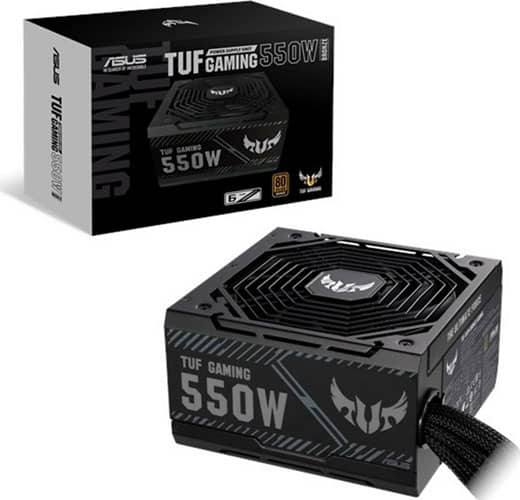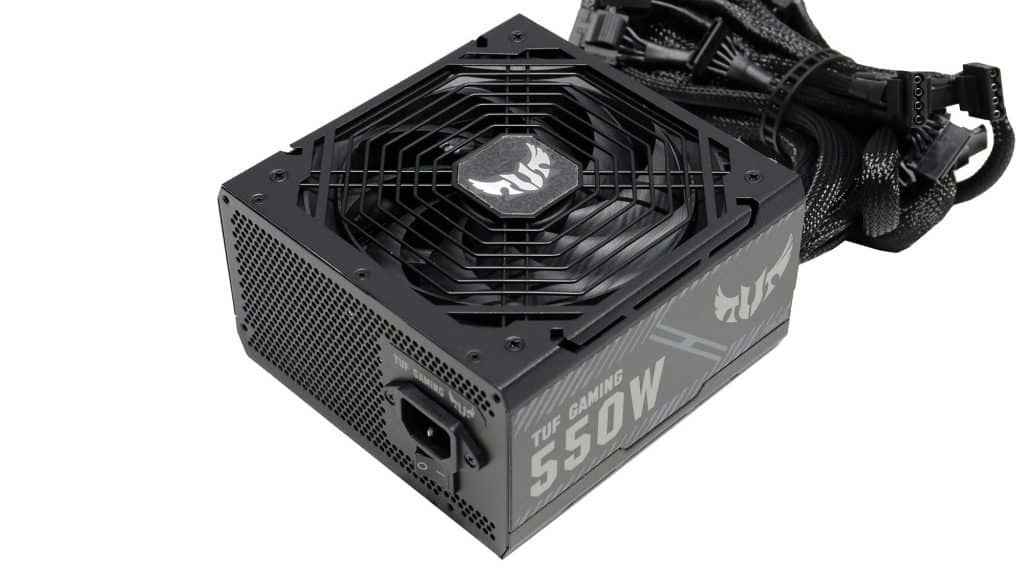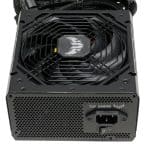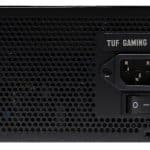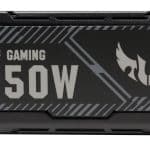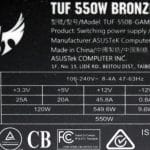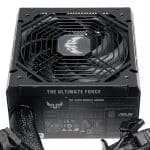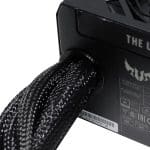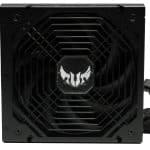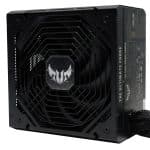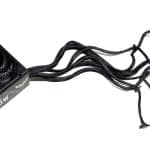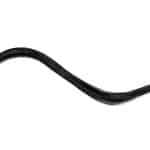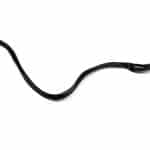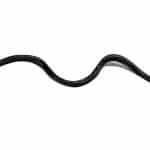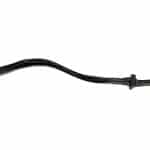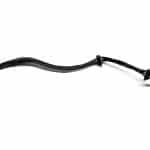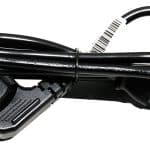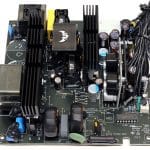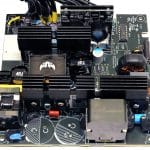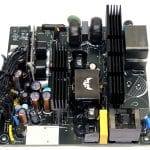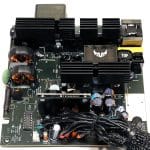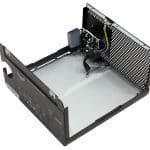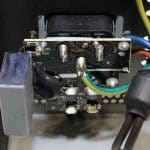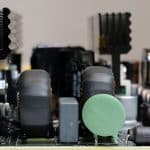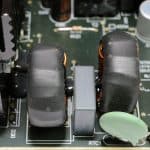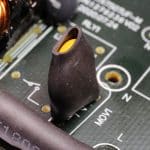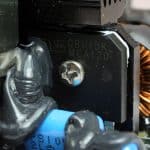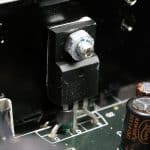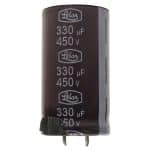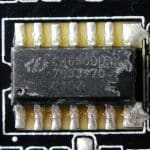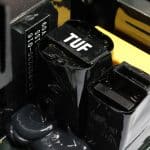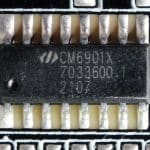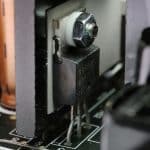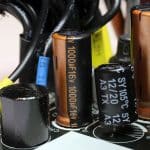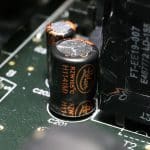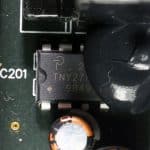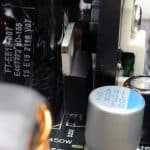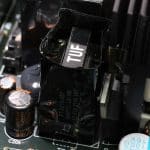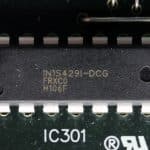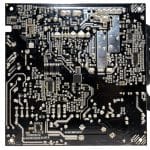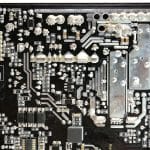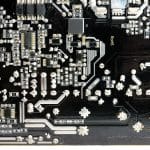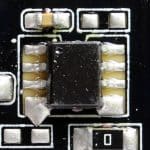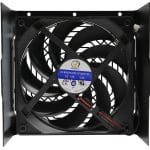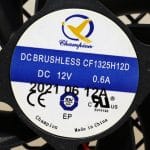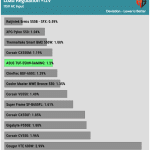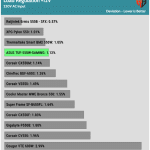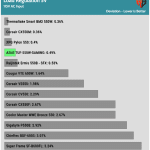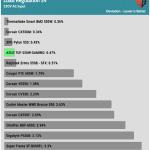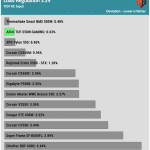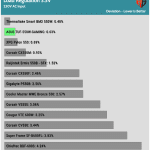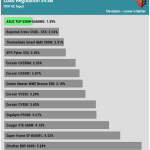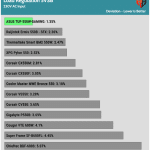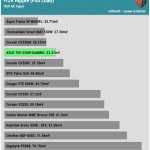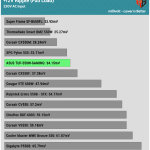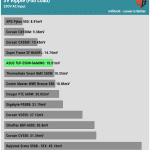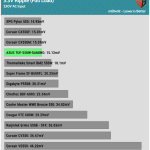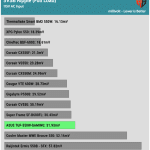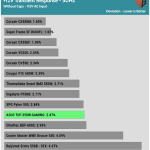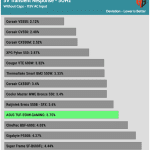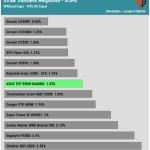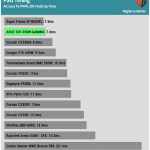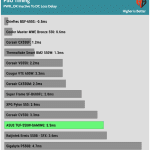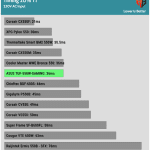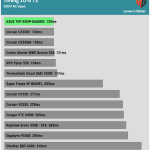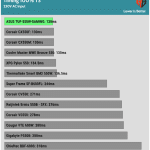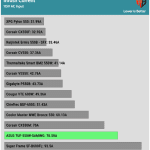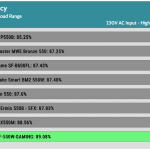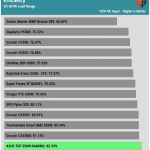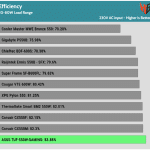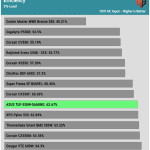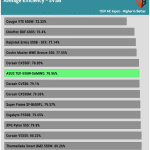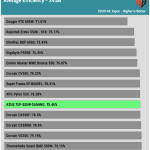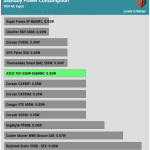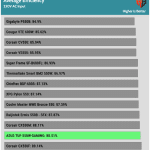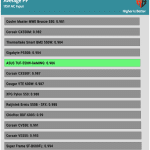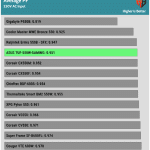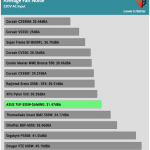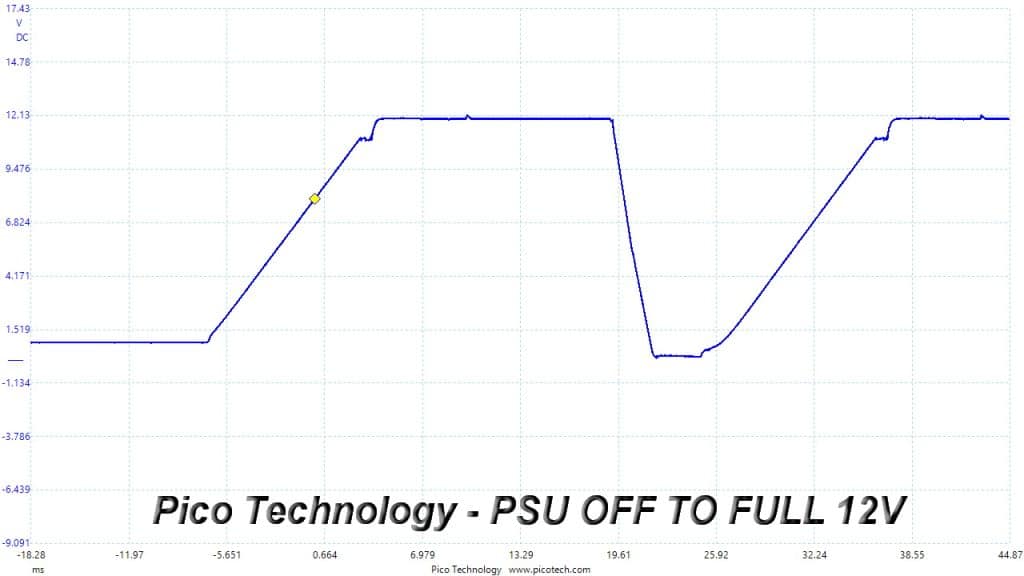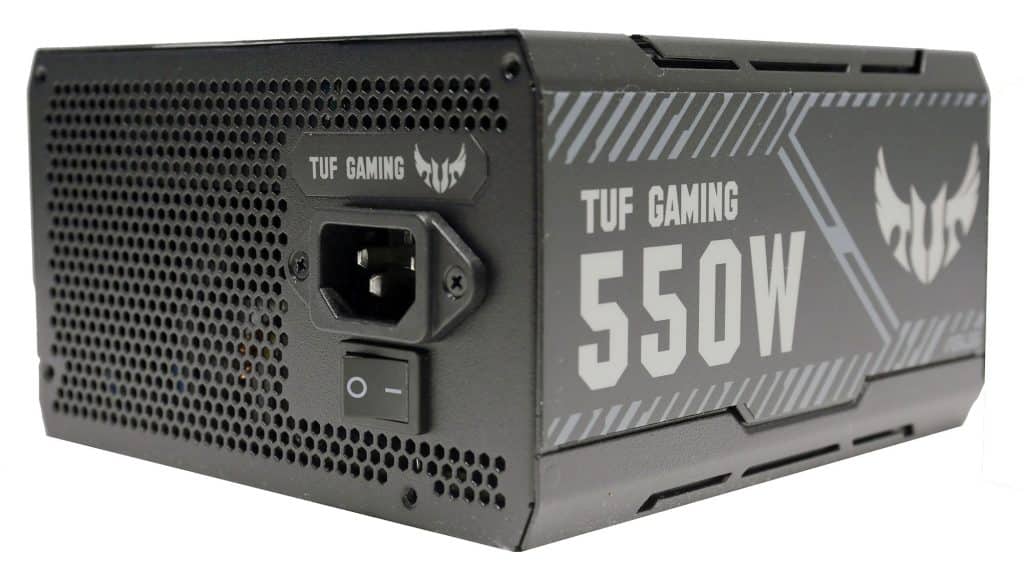ASUS was smart enough to get the Great Wall platform that the Corsair CX units used, to build one of the best lines for budget-oriented users. Is the TUF Gaming 550 good enough to go after the CX550M, the XPG Pylon 550 and the Thermaltake Smart BM2 550? It uses a more modern platform so it should have no problem, or things our tougher than they look? No spoilers, read the review to find out!
I liked a lot the Corsair CX models. For me, this line was the best in the budget-PSU category. This is why I was shocked when Jonny(guru) told me they would stop it because it was too expensive. Indeed, these guys were using a half-bridge topology and an LLC resonant converter, a design usually found in Gold and higher efficiency PSUs, along with high-end caps and other parts. The only compromise to restrict the cost was the native cables, which provide an advantage, though, lower resistance; hence load regulation gets better! Another funny fact about the CX line is that they used two different platforms from two OEMs, CWT and Great Wall. You couldn’t know which OEM you would get, but both platforms had a similar performance, so you shouldn’t care much.
However, this is an ASUS review, so why do I bother referring to Corsair’s CX line so much? This is because ASUS grabbed the platform from GW once Corsair stopped using it, and this was a good move. I don’t remember clearly if I advised them to do that since I have a good relationship with ASUS’ power team, which is also responsible for GPUs, but this doesn’t matter much now.
The star of today’s review is the TUF 550, which was all the necessary specs to top in this category, but do not underestimate the competition from Corsair (CX550M), XPG (Pylon 550), and Thermaltake (Smart BM2 550). All competitors mentioned above use CWT’s CSB platform, which has DC-DC converters for the generation of the minor rails but uses an older design on its primary side, with a double-forward topology. Compared to half-bridge and LLC, the double-forward topology is vastly outdated, but if you use the proper parts, you won’t have a problem achieving Bronze efficiency.
Cybenetics Report
- Manufacturer (OEM): Great Wall
- Max Power: 550W
- Cybenetics Efficiency: [115V] Silver (85-87%)
- 80 Plus Efficiency: Bronze
- Noise: Cybenetics Standard++ (30-35 dB[A])
- Compliance: ATX12V v2.53, EPS 2.92
- Alternative Low Power Mode support: Yes
- Power 12V: 549.6W
- Power 5V + 3.3v: 120W
- Power 5VSB: 15W
- Cooling: 135mm Double Ball-Bearing Fan (CF1325H12D)
- Semi-Passive Operation: Yes
- Modular Design: No
- High Power Connectors: 1x EPS (single cable), 2x PCIe 6+2 pin (single cable)
- Peripheral Connectors: 5x SATA (2x cables), 4x 4-pin Molex (single cable)
- ATX/EPS Cable Length: 610/820mm
- Distance between SATA connectors: 110mm
- Distance between 4-pin Molex connectors: 150mm
- In-cable capacitors: No
- Dimensions (W x H x D): 150 mm x 85 mm x 150 mm
- Weight: 1.92 kg (4.23 lb)
- Warranty: 6 years
Box & Bundle
My sample arrived without a proper box, saving me time since I won’t have to shoot extra photos and write more here.
Product Photos
The exterior design is plain, with the only exception being the fan grille, which looks nice, allowing increased airflow at the same time. It would be nice if there were a switch at the front for toggling on/off the semi-passive operation.
Cables
| Captive Cables | |||||
| Description | Cable Count | Connector Count (Total) | Gauge | In Cable Capacitors | |
|---|---|---|---|---|---|
| ATX connector 20+4 pin (610mm) | 1 | 1 | 18-20AWG | No | |
| 4+4 pin EPS12V (820mm) | 1 | 1 | 18AWG | No | |
| 6+2 pin PCIe (610mm+100mm) | 1 | 2 | 18AWG | No | |
| SATA (400mm+110mm+110mm) | 1 | 3 | 18AWG | No | |
| SATA (410mm+110mm) | 1 | 2 | 18AWG | No | |
| 4-pin Molex (400mm+150mm+150mm+150mm) | 1 | 4 | 18AWG | No | |
| Modular Cables | |||||
| AC Power Cord (1390mm) – C13 coupler | 1 | 1 | 18AWG | – | |
The EPS cable is long! They mean business there in ASUS! The number of connectors is suitable for a 550W PSU, and the distance between the 4-pin Molex connectors is adequate at 150mm. I cannot find anything out of line here.
Protection Features
| OCP (Cold @ 26°C) | 12V: 63.4A (138.43%), 11.921V 5V: 36A (180%), 5.106V 3.3V: 39A (156%), 3.321V 5VSB: 4.8A (160%), 5.030V |
| OCP (Hot @ 37°C) | 12V: 63A (137.55%), 11.948V 5V: 36A (180%), 5.119V 3.3V: 39A (156%), 3.322V 5VSB: 4.8A (160%), 5.028V |
| OPP (Cold @ 26°C) | 732.52W (133.19%) |
| OPP (Hot @ 37°C) | 660.41W (120.07%) |
| OTP | ✓ (110°C @ 12V Heat Sink) |
| SCP | 12V to Earth: ✓ 5V to Earth: ✓ 3.3V to Earth: ✓ 5VSB to Earth: ✓ -12V to Earth: ✓ |
| PWR_OK | Accurate but lower than 16.0ms |
| NLO | ✓ |
| SIP | Surge: MOV Inrush: NTC Thermistor |
OCP at 12V looks high until you look at the OCP triggering points on the minor rails! I don’t believe that GW paid any attention to setting up the protection features on the minor rails. Thankfully OPP is set correctly; else, the PSU would be a firecracker.
Part Analysis
| General Data | – |
| Manufacturer (OEM) | Great Wall |
| PCB Type | Single Sided |
| Primary Side | – |
| Transient Filter | 4x Y caps, 2x X caps, 2x CM chokes, 1x MOV |
| Inrush Protection | NTC Thermistor 15S1R5M (1.5 Ohm) |
| Bridge Rectifier(s) |
1x GBU15K (800V, 15A @ 100°C)
|
| APFC MOSFETs |
2x ROHM R6020ENX (600V, 20A, Rds(on): 0.196Ohm)
|
| APFC Boost Diode |
1x NXP BYC8B-600 (600V, 8A)
|
| Bulk Cap(s) |
1x Lelon (450V, 330uF, 2,000h @ 105°C, LSG)
|
| Main Switchers |
2x STMicroelectronics STF24N60DM2 (600V, 11A @ 100°C, Rds(on): 0.2Ohm)
|
| APFC Controller |
Champion CM6500UNX & CM03AX
|
| Resonant Controller | Champion CM6901X |
| Topology |
Primary
side: APFC, Half-Bridge & LLC converter Secondary side: Synchronous Rectification & DC-DC converters |
| Secondary Side | – |
| +12V MOSFETs | 4x Advanced Power AP9990GP (60V, 80A @ 100°C, Rds(on): 6mOhm) |
| 5V & 3.3V | DC-DC Converters |
| Filtering Capacitors | Electrolytic: 7x Lelon (4-7,000h @ 105°C, RXW), 2x Teapo (3-6,000h @ 105°C, SY) Polymer: 1x Elite, 5x Lelon, 2x no info |
| Supervisor IC | IN1S429I – DCG |
| Fan Model | Champion CF1325H12D (135mm, 12V, 0.6A, Double Ball Bearing) |
| 5VSB Circuit | – |
| Rectifier |
1x PFC PFR30L45CT SBR (45V, 30A)
|
| Standby PWM Controller | Power Intergrations TNY278PN |
This platform is too advanced for this category’s standards. No LLC resonant converter or a half-bridge topology is needed to output Bronze or Silver efficiency. In the past, even some Gold PSUs used a double-forward topology. Nevertheless, GW delivered a good platform, which has already proven its worth and reliability in the Corsair CX units. The latter used better parts, but these were different times. In the last two years, everything has changed in the industry (and the world), and the prices have gone sky-high. This forced GW to use inferior Lelon caps, which might look good according to their paper spec, but still, I don’t trust them as much as I trust other well-known brands. The second part that is of utmost importance in PSUs, the cooling fan, is of high quality since it uses a double ball-bearing which will easily withstand abuse. Lastly, the soldering quality is good. As far as I remember, I never had any complaints in this section from GW.
Load Regulation
Load regulation is satisfactory at 12V for this category and tight on the other rails.
Ripple Suppression
Ripple suppression is good! With a better filtering cap at 5VSB, ripple would be lower on this rail. Still, 32-33mv ripple at 5VSB under a full load is nothing to worry about.
Transient Response
I expected a better transient response given the modern platform, but I was hugely disappointed.
Hold Up Time
The hold-up time is super-short. A larger bulk cap is required.
Timings
The PSU supports Alternative Low Power Modes.
Inrush Current
Inrush currents are high. GW should use a higher resistance NTC thermistor to lower them.
Efficiency Normal, Light & Super-Light Loads
The modern platform allows for high efficiency on all load ranges, from normal to super-light.
Average Efficiency 5VSB
The 5VSB rail achieves decent efficiency.
Vampire Power
Vampire power is low at 115V. I want to see below 0.1W with 230V input, though.
Average Efficiency
The average efficiency is high. Only the CX550F surpasses the TUF unit, using a similar design, half-bridge, LLC, synchronous rectification, and DC-DC, but from another OEM (HEC).
Average PF
The APFC converter needs tuning for higher PF readings with 230V input.
Average Noise
The average noise output could be lower, considering the platform’s efficiency.
Fan Noise & Speed Maps @ 28-32 °C
High loads on the minor rails affect the fan’s speed. This seems to be the case for very light loads, too, from 50 to 160W. With more than 160W, the cooling fan enters the 25-30 dBA zone, while with more than 300W, it passes the 30 dBA mark. Lastly, with >360W, noise exceeds 35 dBA.
Turn-On Transient Tests
I usually don’t include scope shots unless I want to show something important. As you can see in the screenshot above, there is a huge voltage drop at 12V in the “PSU OFF to Full 12V” scenario, which is not close to real life, thankfully. Nonetheless, the PSU should be able to keep the 12V rail in control and not allow it to drop so low!
Overall Performance
The overall performance is high, but it is weird to see less advanced platforms take the lead. With better transient response and correctly set protection features, the TUF 550 would easily take the lead. It is high time for GW to update this platform.
Epilogue
The ASUS TUF 550 is among the best PSUs in the Bronze and Silver categories, and with a bit of tuning, it can easily leave behind the competition from Corsair, XPG, and Thermaltake. It uses an advanced platform and a good cooling fan, probably the best in this category, but I’m afraid I have to disagree with the caps choice. I know that things are tough after the pandemic effect in production, but ASUS should advise GW to use Teapo caps, at least, instead of Lelon. Most cap manufacturers have vastly improved their production lines in the last decade. Still, they have a long way to cover to convince me they are as reliable as the other good and affordable brands, Teapo and Elite. I remember seeing Rubycon caps in older Corsair CX models. These were the good times before the prices skyrocketed!
If you don’t have a problem with the fixed cables, the ASUS TUF line offers high efficiency and low noise output under normal operating conditions. These units will be even more attractive with slightly lower price tags. Nonetheless, Corsair’s CX550M unit achieves a bit higher performance and is notably quieter. On top of that, it uses a semi-modular cable design, which is more usable than the TUF unit’s fixed cables. The XPG Pylon 550 is also a great unit featuring an FDB fan. We usually find sleeve or, in the best-case scenario, rifle-bearing fans in this category, but XPG managed to use a good FDB fan by Hong Hua without breaking the bank. The DBB of the TUF unit is even better, though, because DBB fans can take more abuse than any FDB without breaking.
Buy ASUS TUF GAMING 550W
Buy Corsair CX550M
Buy Seasonic S12III 550
Buy Thermaltake Smart BM2 550W
Buy Cooler Master MWE Bronze 600
Buy XPG Pylon 550W
- Full power at 40°C
- High enough overall performance
- Efficient platform
- Low ripple
- Tight load regulation on the minor rails
- Not noisy under normal operating conditions
- Soldering quality is high
- ALPM support
- Low vampire power at 115V
- DBB fan
- 820mm long EPS cable (!)
- 150mm distance between the peripheral connectors
- 6-year warranty
- Loose transient response
- Dead-short hold-up time
- High inrush currents
- Silly high OCP triggering points on the minor rails
- Not a big fan of Lelon caps
- Low PF with 230V
- I noticed a huge voltage drop at 12V during the turn-on transient tests
